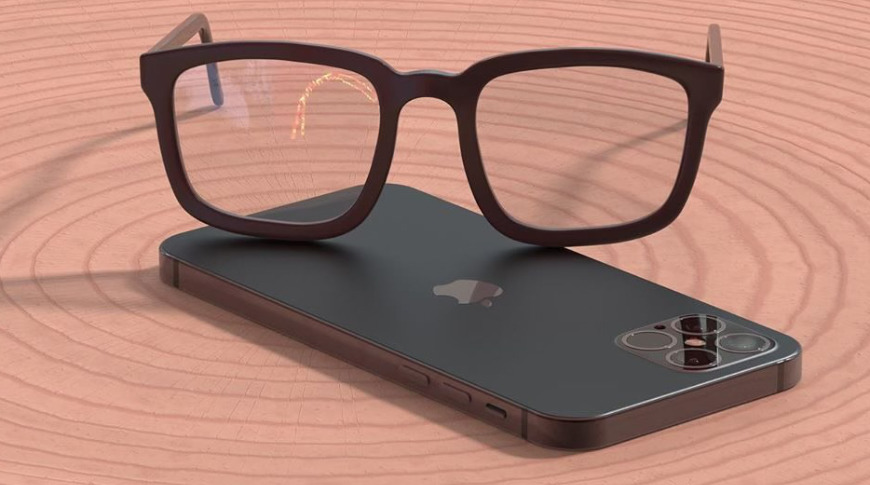Apple's forthcoming "Apple Glass" could feature systems that register dilated pupils, and so alter brightness to provide a comfortable viewing experience and monitor the user's attention.
One of the issues said to be delaying "Apple Glass" is the fact that they'll have to be comfortable to wear for protracted periods. Alongside lightweight frames, though, Apple is also looking at how this — or any Apple AR headset — can adjust what you see based on how you're reacting. A pair of recently revealed patent applications propose simply altering the brightness, or actually changing what's shown on the headset depending on the wearer's interest.
"Utilization of luminance changes to determine user characteristics," is concerned with detecting and measuring the dilation of a user wearing a Head-Mounted Display (HMD).
"A user's state (e.g., distracted, attentive, etc.) while viewing content on an electronic device can have a significant effect on the user's experience," says Apple. "Content creators and display systems may be able to provide better and more tailored user experiences that a user is more likely to enjoy, comprehend, and learn from based on being able to determine the user's state."
"Apple Glass," or any other headset, will know what media it is showing to the user. But if it can also track that user's eyes, it can assess "particular types of physiological responses in users viewing the content."
"For example, the pupils of users may experience dilation or constriction automatically in response to luminance changes in content, e.g., as the content changes from mostly dim to mostly bright and vice versa," continues Apple. "[The] physiological response of a user to such a change in content may depend upon the user's state."
As an example, Apple offers that, "if the luminance of the content increases while the user is attentive and engaged, the pupillary response may be slower and smaller in magnitude" compared to when they're tired.
"[Some proposals] improve a user's enjoyment and/or comprehension during a user experience by providing alternative content and/or a suggestion (e.g., that the user take a break) based on detecting the user's state," continues Apple.
The patent application goes into details of the steps such tracking and analysis could go through under different circumstances, and responding to difference changes in luminance. In each case, though, the core idea is the same — that if you're tired or distracted, "Apple Glass" should give developers the ability to change what you're seeing.
This first of two related patent applications is credited to three inventors. They include Grant H. Mulliken, who has previously worked on how "Apple Glass" could unlock your iPhone by detecting that you've looked at it.
The second newly revealed patent application on similar lines is "Electronic Device Having Display With Internal Light Reflection Suppression." This concentrates on the seemingly simpler issue of how light is reflected within a HMD, but the overall purpose is the same one of reducing discomfort in wearing "Apple Glass."
"During operation [of the HMD], the pixels in a display emit light," says Apple. "The light passes through overlapping transparent structures for viewing by a user."
"It can be challenging to form emissive displays for electronic devices such as head-mounted devices," continues the patent application. "The transparent structures that overlap an emissive display may help protect the display, but serve as a potential high-refractive-index layer that can trap and guide off-axis emitted light rays in accordance with the principal of total internal reflection."
This is reportedly a particular problem with displays that have "a high pixel density such as a display in a head-mounted device," where could be "numerous surface imperfections." These imperfections "can scatter this trapped light outwardly, thereby reducing the contrast of the display."
Apple's proposal is to use "reflection suppression structures." These could be "an antireflection layer and/or polarizer" layer using thin-film interference filters" or "microlenses."
This second patent application is credited to six inventors, including Graham B. Myhre. His previous related work includes research into making the images in AR and VR be high resolution.
 William Gallagher
William Gallagher









-m.jpg)






 Charles Martin
Charles Martin
 Christine McKee
Christine McKee
 Wesley Hilliard
Wesley Hilliard
 Malcolm Owen
Malcolm Owen
 Andrew Orr
Andrew Orr

 Sponsored Content
Sponsored Content








3 Comments
Loving that flush camera array.
So the glasses will know when I am sleeping, and know when I'm awake? Will they know if I've been bad or good?
Does this mean that Apple Glass will be something we can use while driving? A kind of heads up display that works in any vehicle with turn by turn directions, warnings of upcoming hazards and useful non-distracting notifications?